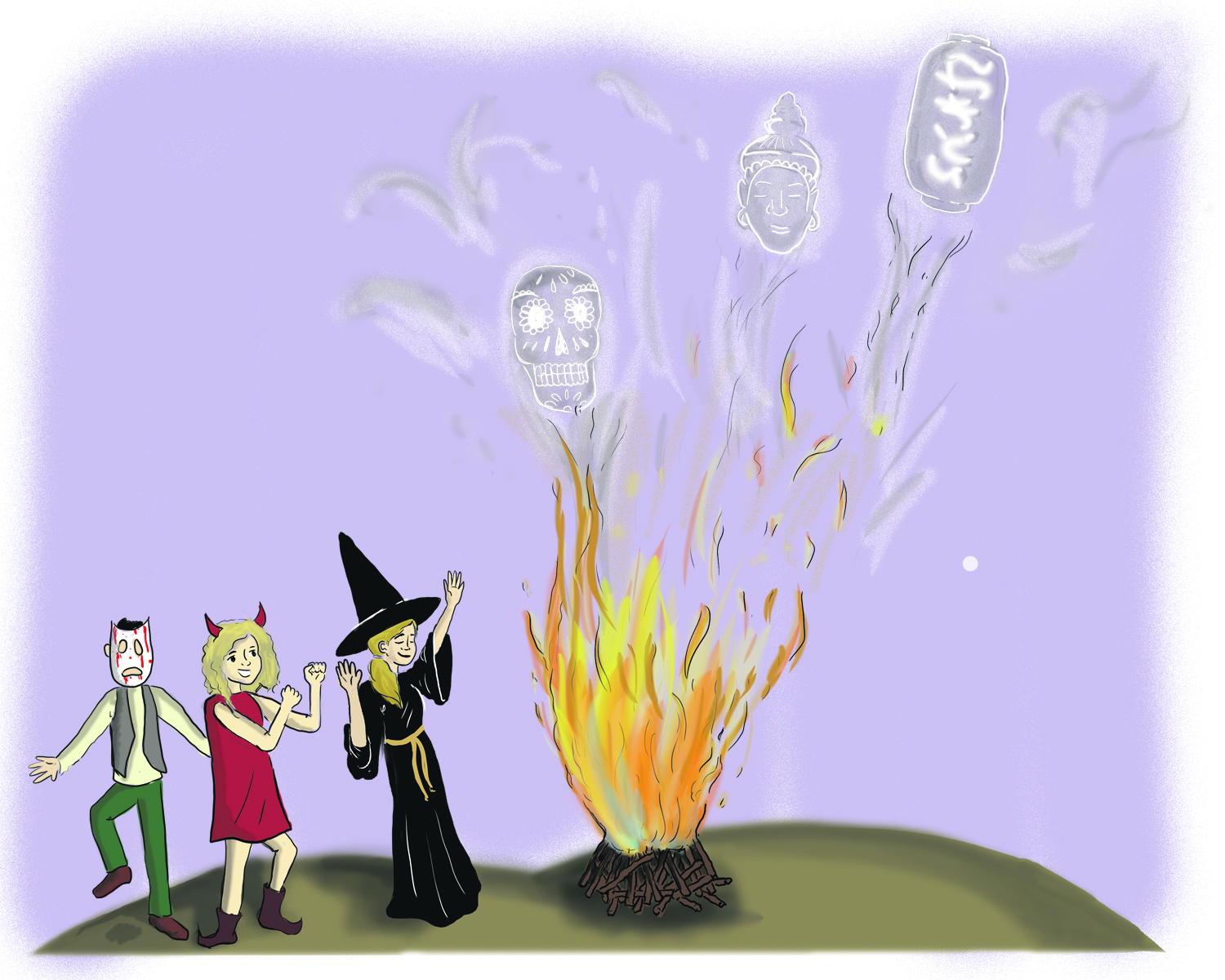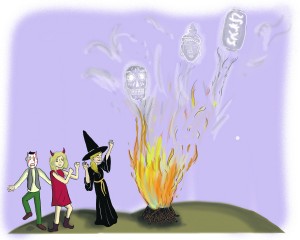Tracking traditions of all hallow’s eve


Behind the ghoulish masks and decorated doorways that mystify the evening of Oct. 31, there is a history of Pagan tradition that dates back a few thousand years ago. Originating in the regions of Ireland, Scotland, Whales and the United Kingdom, Halloween began as an ancient Celtic festival called Samhain.
“In Whales and Scotland and so forth, what you had was the belief in spirits … and then you also had the change of seasons. So, summer being over and the start of the dark, gloomy winter,” said Michel Desjardins, a professor of religion and culture at Wilfrid Laurier University and the acting dean of the faculty of arts.
“That transition period was thought to be particularly special and charged with spiritual energy. It’s a time when somehow the realm of the spirit world opened up.”
Although no structured religion had emerged yet in these parts of the world, there prevailed a general belief in a continued state of being after death. During the last day of October, spirits were able to cross over from their world and visit the realm of the living.
“It’s a human belief, if you’re atheist you don’t believe in the existence of spirits but most people in the world do, just different versions of it,” said Desjardins. “So for a lot of people in the world, they believe that when their parents or siblings die they go to a different place but their spirits are somehow still there and you can connect to them. You can pray to them, they can hear you and in some parts of the world those spirits are seen to be pretty real so you actually feed them.”
The Offering of Food
Food offerings are one of the many activities that the ancient Celts would partake in in order to prepare for the visiting dead. They would set out meals on their doorsteps at the end of the night in order to either please or fend them off.
“There was food involved in feeding evil spirits to keep them away and there was food involved in feeding your ancestors because the good spirits would also come up and you would want to feed them,” said Desjardins. “It’s not like the food goes away but they would take the spiritual part of the food.”
Other places around the world such as Cambodia and Mexico share a similar tradition during their own festivals for the dead.
Like the ancient Celts, Cambodians believe as well in a period of time when the barrier between the dead and the living can be breached except its occurrence is over the course of fourteen days during the month of September. These days are called Kann Ben and people wake up early each morning to bring food offerings to their local pagoda temple in hopes that the meals will reach their wandering ancestors. On the last day there is a large celebration where the community is able to feast together canned Pchum Ben.
Mexico’s three day festival for the dead is called Los Dias de los Muertos and food is offered to spirits on elaborate alters called ofrendas. These alters are set up in everyone’s homes and are decorated with traditional snacks such as sugar skulls and a special bread called pan de muertos. Traditionally, this celebration commences on Oct.31 and continues on until Nov. 2 wherein the first day of
November is dedicated to the young who have died and the second is meant for the old.
The Lighting of Fires
Another large component of the Samhein tradition was a community bonfire which would light up the last night of October.
“Winter was about to start so people would light a fire and considered that act special,” said Desjardins. “People would then take the fire home because there was this sense that you needed warmth and fire for the next few months.”
This special fire was not only meant to warm the living but to also provide comfort for the dead, much like the intentions of the Japanese Obon fires.
In Japan, the time when spirits of ancestors may visit occurs during the month of August. This short period begins with the lighting of chochin lanterns within the homes of Japanese families in hopes that the spirits of past relatives will find their way home. On the last day, these lanterns are sent away down a river to guide the spirits back to the place from which they came.
The Wearing of Costumes
While many international celebrations of the dead focus primarily on the welcoming of spirits, there is an element of fear to the ancient festival of Samhein that sets it apart from the rest. While eagerly anticipating the good spirits of their past loved ones, the Celts were also anxious about the evil spirits that may accompany them and dressed accordingly.
“If you have a bunch of evil spirits coming up, you don’t want them to find you. So how best to control that than by pretending that you’re an evil spirit,” said Desjardins. “So you put on a mask and you look like the evil spirit and they think you’re one of them and they don’t bother you.”
This act of dressing up in costume is something that has emerged as a main element of modern day Halloween, along with the expectation of food to be given out after dark in the form of trick or treating.
“So [with costumes], you know the evil spirits are there but you’re trying to trick them or you feed them so they go away… so if you’ve got those components in place that go back thousands of years and then you look at modern Halloween, all the bits are there,” said Desjardins.
The Christian Reform
However, it is surprising that these ancient traditions have survived for as long as they have considering Christian ascendancy over Paganism during the early middle ages.
“Originally the word [Pagan] was coined by Christians to mean someone of the countryside. A farmer. A disgusting, lower class, uneducated, stupid farmer. So it’s that distinction of the lower down, as opposed to upper, and it was a way for Christians to talk about others that they thought were unsophisticated,” explained Desjardins.
Anyone who practised a belief that was not aligned with Christianity was oppressed in this way, and yet it was difficult to discourage the Celts from carrying out their traditions. So a different approach was taken.
“Christians emerged there, and if you’re Christian you believed in spirits. Good spirits, bad spirits, all that’s okay but these aren’t proper spirits because they aren’t proper Christian,” said Desjardins.
“So what Christianity did when it moved to that part of the world is what it did everywhere, it realized that it couldn’t take away the importance of that festival because it had been so ingrained and it was so much what people did so it Christianised it.”
This meant that the focus of the Samhein festival, which was previously centered on spirits of ancestors and passed loved ones, was shifted to focus on the spirits of past Christians.
“So they essentially said that Nov. 1 is going to be the day that we celebrate all the saints… So All Saints Day,” said Desjardins. “And the day before All Saints Day is All Hallows Eve, so the eve of the all holy people, which is what Halloween means.”
Similar celebrations around the world put on for the dead have come to align with certain structured religions too, for instance the Cambodian Pchum Ben follows Buddhist beliefs and the Mexican Los Dias de los Muertos has Christian connotations as well. But running through every different festival is a shared and basic belief in the existence of spirits and the ability to communicate with them in a special way during a certain special time of the year.
“Even today if you look at religious individuals around the world, what you get is this kind of base core belief in spirits,” said Dejardins. “So regardless of the religious traditions, Christianity or Islam or Buddhism, these large traditions that have established structure, at the core is this belief that spirits are everywhere.”


